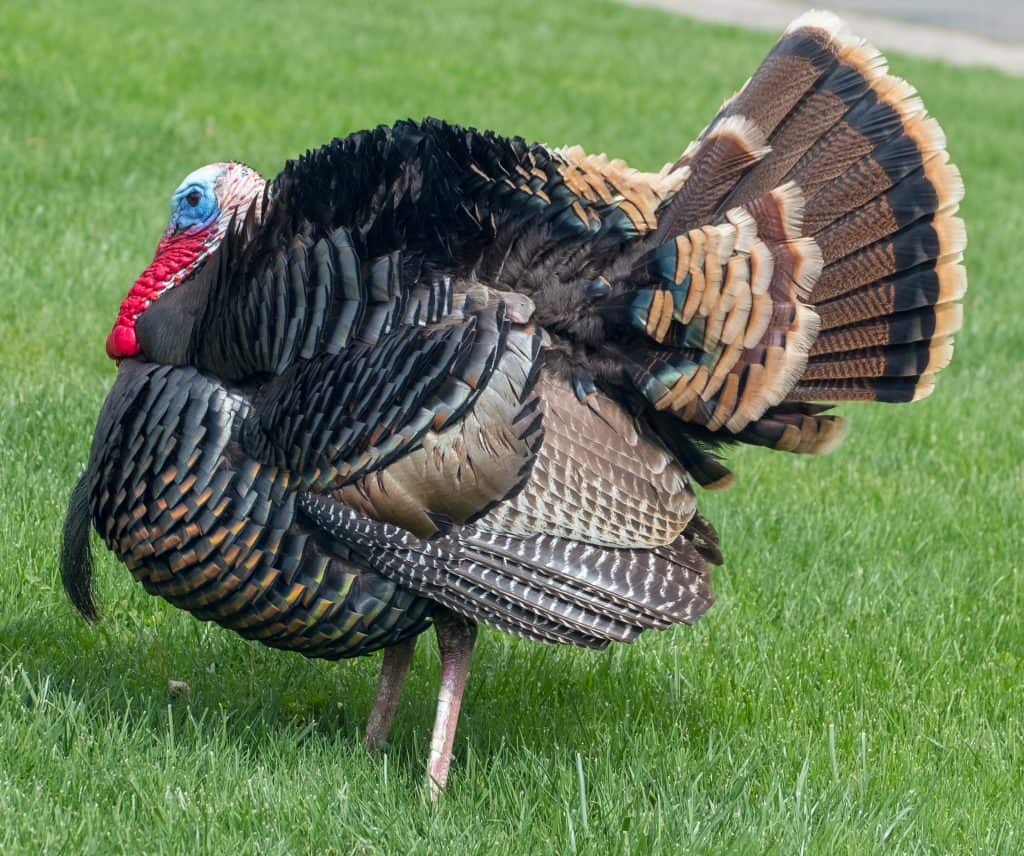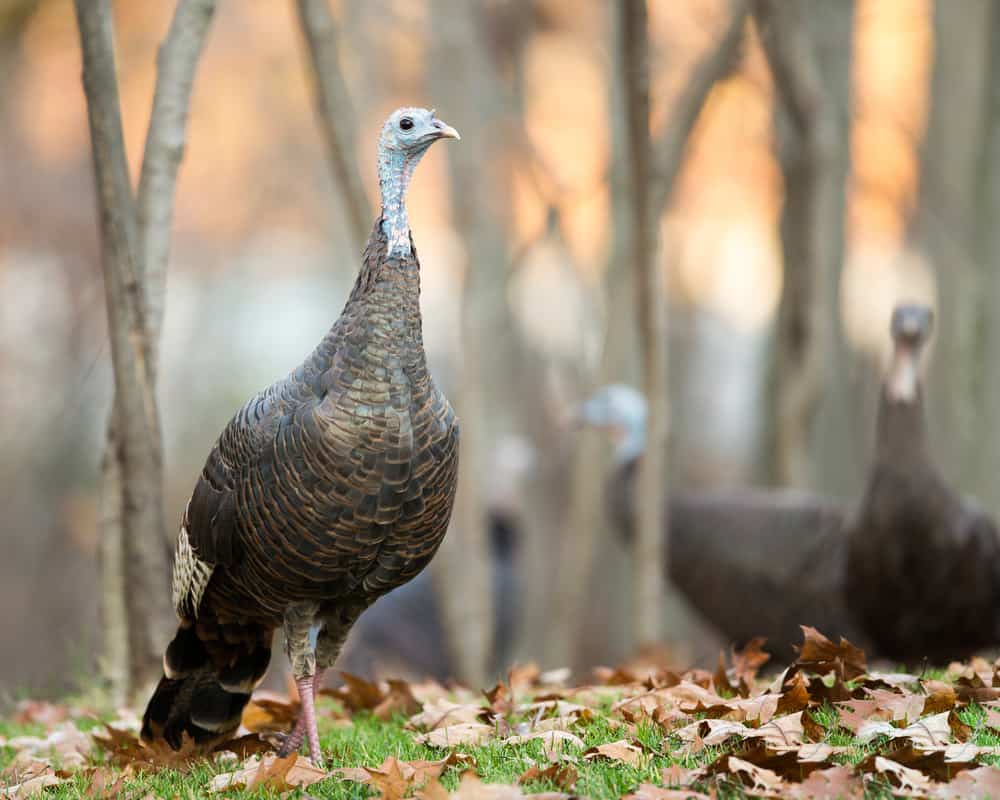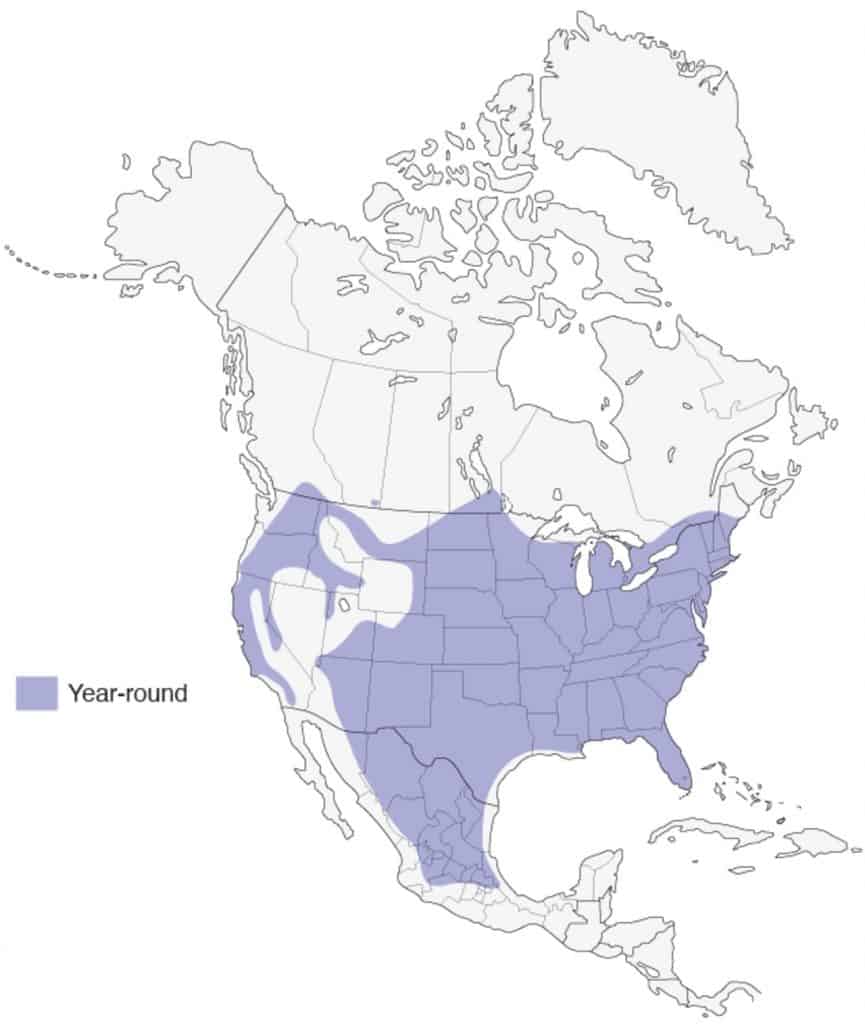

Appearance: Wild turkeys are enormous birds about 45″ long with long necks, large prominent red wattles, snoods (hanging skin from the neck), and a bronze-greenish iridescence to most of their feathers. The feathers also give the appearance of a variety of textures. Their wings are dark, with white bars and a fanned-out tail with rusty or white tips. Their head and neck show their skin with colors of red, blue, and gray. The red neck is unmistakable. The females are similar but lighter in color, they don’t fan their tail feathers, have subtle-looking wattle and snood, and don’t strut like the males.
Diet: Wild turkeys are ground foragers consuming seeds, nuts (acorns, beech nuts, pecans, hickory nuts), and berries.
Feeder food: Wild turkeys do not come to feeders.
Habitat: Wild turkeys are widespread throughout the US, southernmost parts of Canada, and Mexico. They prefer open forested areas, especially those with nut-producing trees. In the southwest, they can be found in open grassy savannahs.
Nesting: Wild turkeys are ground nesters. The female creates a shallow depression in the ground and fills it with leaves. The completed nest can be as large as 10″ x 12″. They have 1 brood/season, 4-17 eggs, eggs are 2-3″ long x 1.5-2″ wide. They’re a light yellow/tan color with red/brown or pink speckles and incubation lasts about 25-31 days.
Migration: Wild turkeys are not migrators. They remain in their year-round range every season of the year.
Year-round range: Every US state, Mexico, the southern portions of Canada’s British Columbia, Manitoba, Ontario, and Quebec.


